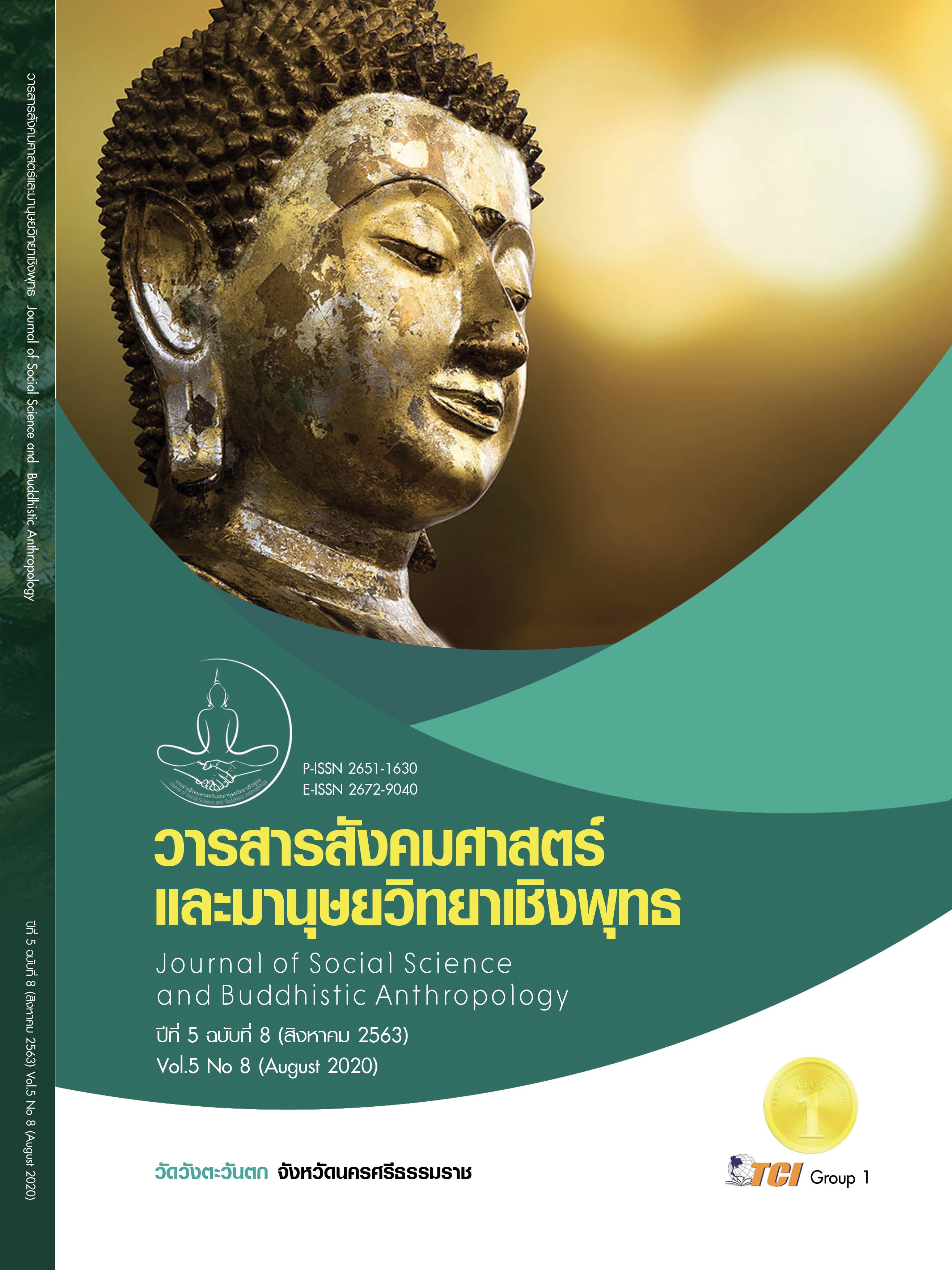THE PARTICIPATION SYSTEM OF WASTE PRODUCTS INTEGRATION MANAGEMENT OF COMMUNITY IN THE CENTRAL AREA
Keywords:
System, Participation, Waste Products Community, IntegrationAbstract
The research, The participation System of Waste Products Integration Management of Community in the Central Area of Thailand, The research methodology is mixed method, The research purpose, for develop the Participation system of waste product in the community by the survey research 400 Questionnaires, in depth interview from 17 Key informants and Synthesis The Model by focus group 2 times from 25 Key informants. The research result, find that the participation System to community waste products should be to build innovation of management by the basking system of Temple, School, village, Every one, Know the purpose of all active of the waste products Banking system. and all community of Local government Authority must be Cooperation to each others by 3 ways operation, are, waste Product products management by 3 process, of Committee Preparing, understanding of all factors, and finally prepare , understanding of all factors, and finally , prepare for Team and persons for action, by the good manual, material, budget and Community planning from up steam midstream and down stream to successful.
References
กรมควบคุมมลพิษ. (2556). คู่มือการลด คัดแยกและใช้ประโยชน์ขยะมูลฝอย. กรุงเทพมหานคร: บริษัท ธนารักษ์พัฒนาสินทรัพย์ จำกัด.
กรมควบคุมมลพิษ. (2557). รายงานสถานการณ์มลพิษของประเทศไทยปี 2557. กรุงเทพมหานคร: กระทรวงทรัพยากรธรรมชาติและสิ่งแวดล้อม.
กานต์ นาคะพงษ์. (2560). รูปแบบกํารจัดกํารขยะมูลฝอยโดยใช้กระบวนการพาอิก. วารสารวิชาการมหาวิทยาลัยอีสเทิร์นเอเชีย ฉบับวิทยาศาสตร์และเทคโนโลยี, 11(1), 160 - 170.
ณัฐชนันท์ เชียงพฤกษ์ และคณะ. (2015). สภาพการจัดการขยะมูลฝอยชุมชนชนบทบ้านโคกม่วง อำเภอโนนสัง จังหวัดหนองบัวลำภู. The State of Rural Solid Waste Management in Kokmuang Village, 11(2), 9 - 28.
ดํารัสศิริ ศิลปวัฒนานันท์. (2559). การประเมินผลการจัดการโครงการโรงงานกําจัดขยะมูลฝอยขององค์การบริหารส่วนจังหวัดเชียงใหม่. วารสารมหาวิทยาลัยพายัพ, 26(1), 108 - 128.
นูรียะ วาเต๊ะ. (2560). การเปรียบเทียบการจัดการขยะมูลฝอยขององค์การบริหารส่วนตําบล ในอําเภอเมืองปัตตานี จังหวัดปัตตานี. วารสารเทคโนโลยีภาคใต้, 10(1), 97 - 111.
ภิศักดิ์ กัลยาณมิตร และวชิรวัชร งามละม่อม. (2561). แนวทางการพัฒนาการจัดการขยะมูลฝอยขององค์กรปกครองส่วนท้องถิ่น. วารสารวิชาการแพรวากาฬสินธุ์, 5(1), 172 - 193.
มูลนิธิชัยพัฒนา.ปรัชญาเศรษฐกิจพอเพียง. (2560). เรียกใช้เมื่อ 23 มกราคม 2560 จาก https://www.chaipat.or.th/publication/publish-document/sufficiency-economy.ht
อนุช ลีละเศรษฐกุล และสุธรรม ปทุมสวัสดิ์. (2016). การวิเคราะห์คุณสมบัติขยะมูลฝอยเพื่อแนวทางการผลิตเชื้อเพลิงขยะของโรงกาจัดขยะมูลฝอยเซิงกลชีวภาพอ่อนนุช. Journal of Energy and Environment Technology, 3(2), 50 - 59.
Taro Yamane. (1970). Determining sample size for research activities. Educational and Psychological Measurement, 30(3), 607 - 610.








